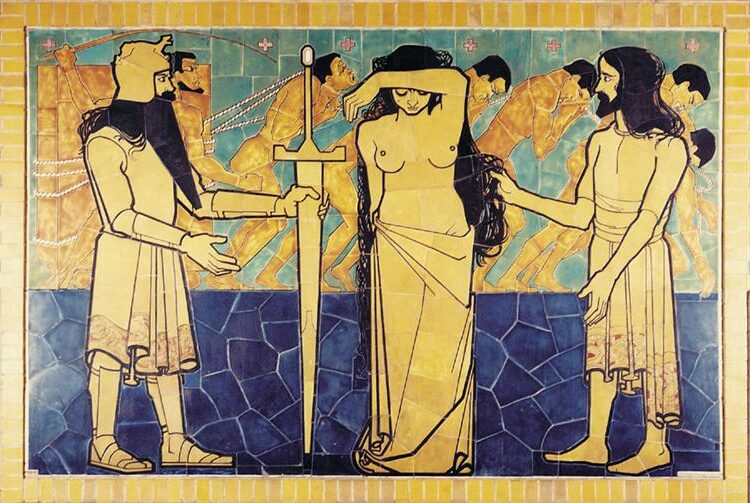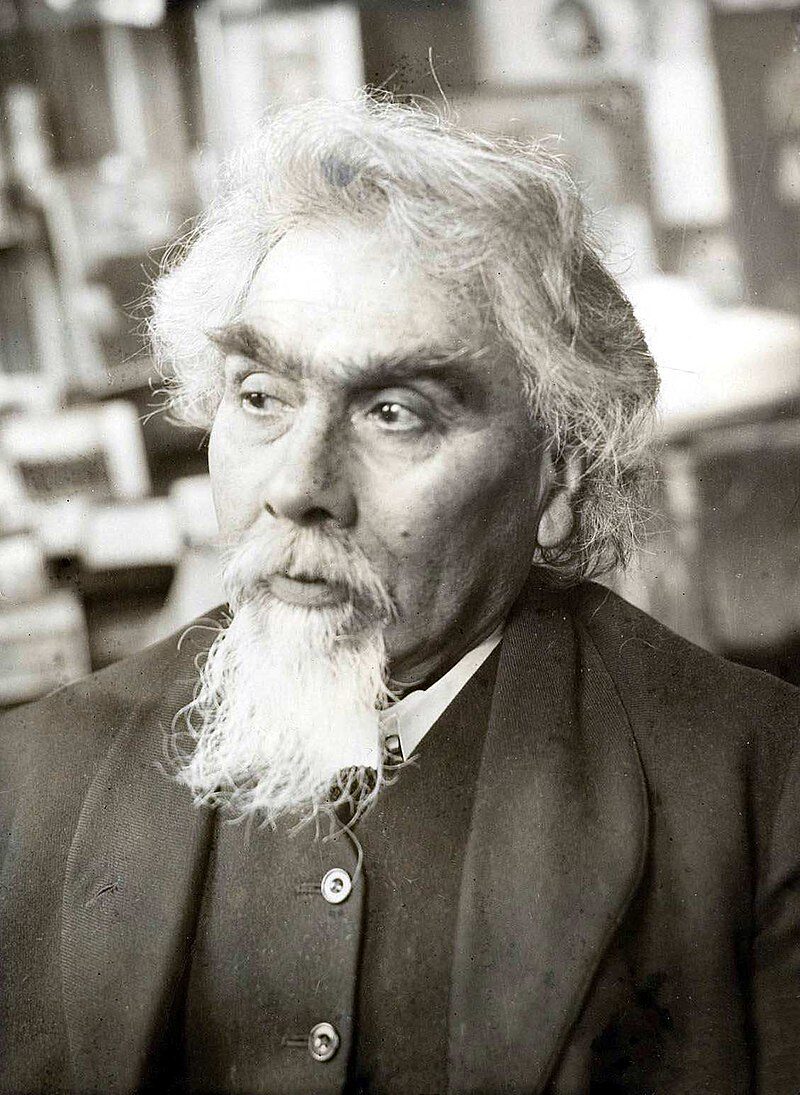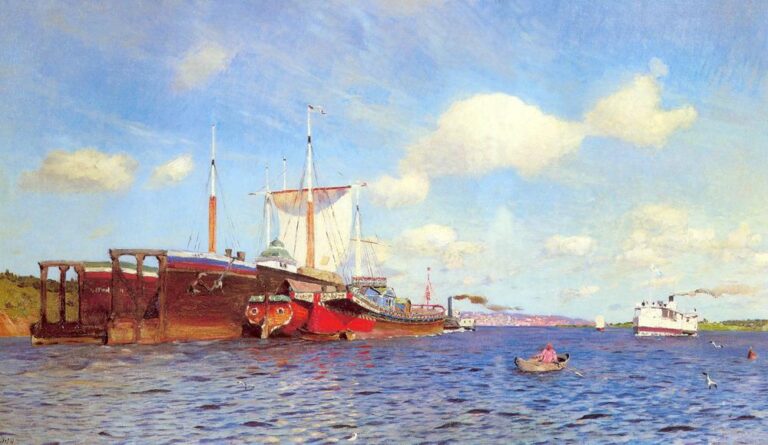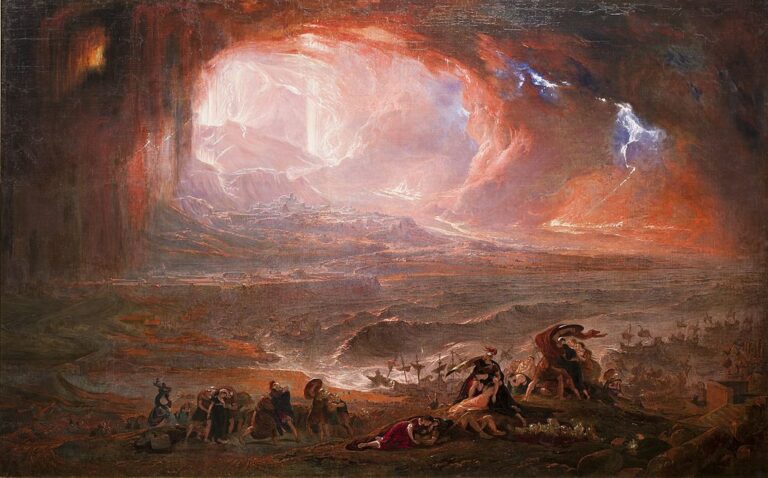Jan Toorop Painter: Dutch Symbolist’s Influence on Art Nouveau
Born: 20 December 1858, Poerworedjo, Dutch East Indies
Death: 3 March 1928, The Hague, Netherlands
Art Movement: Symbolism, Art Nouveau, Pointillism, Impressionism
Nationality: Dutch
Institution: State Academy of Fine Arts, Amsterdam
Jan Toorop Painter: Dutch Symbolist’s Influence on Art Nouveau
Life and Career of Jan Toorop
Jan Toorop was a Dutch-Indonesian painter who worked in various styles throughout his life. He made important contributions to Symbolism, Art Nouveau, and Pointillism.
Early Life and Education
Jan Toorop was born on December 20, 1858, in Purworejo, Java, in the Dutch East Indies (now Indonesia). He was the third of five children. His father worked as a civil servant.

The Three Brides (1893) by Jan Toorop
Toorop spent his early childhood on the island of Bangka near Sumatra. At age nine, Toorop moved to the Netherlands for his education.
He studied art in Amsterdam and later in Brussels. These early experiences in both Southeast Asia and Europe shaped his unique artistic vision.
Rise to Prominence
In the 1880s and 1890s, Toorop gained recognition for his innovative work. He experimented with different styles, including Realism, Impressionism, and Neo-Impressionism.
His Symbolist paintings from this period are among his most famous works. Toorop became friends with other important artists like Piet Mondrian.
His distinctive style influenced the development of Art Nouveau in the Netherlands. He often used flowing, organic lines in his work.
Later Years and Death
In his later career, Toorop focused more on religious themes. He converted to Catholicism in 1905, which impacted his art.
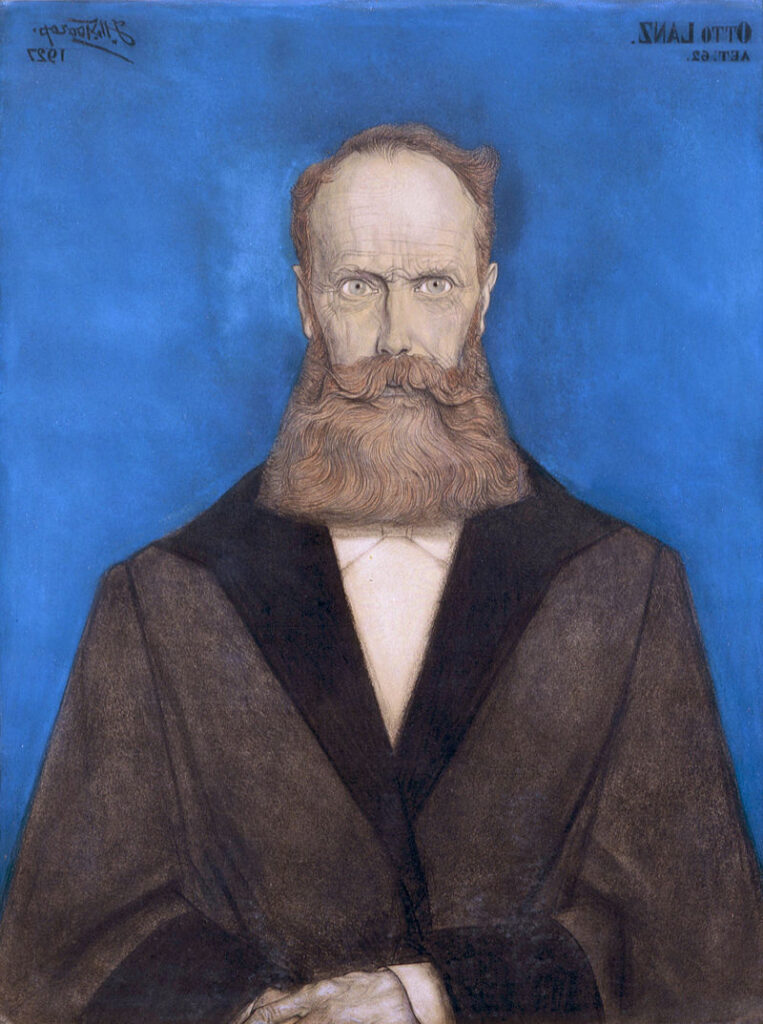
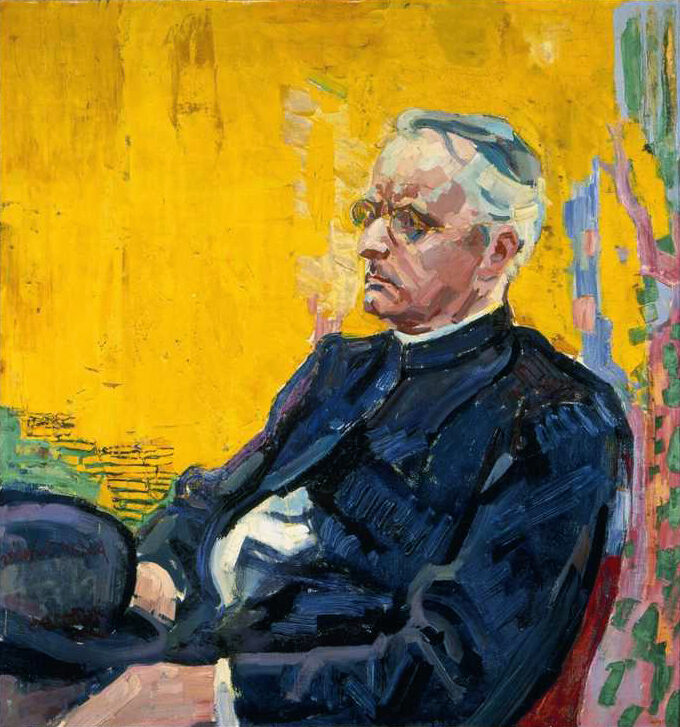
He continued to paint and draw, creating many portraits and landscapes. Toorop’s daughter, Charley Toorop, also became a well-known artist.
Jan Toorop spent much of his later life in The Hague. He died on March 3, 1928, leaving behind a rich artistic legacy that bridged multiple styles and cultures.
Artistic Style and Contributions
Jan Toorop was a versatile Dutch-Indonesian painter who worked in many styles. His art blended Eastern and Western influences, creating unique works that left a lasting impact.
Symbolism and Art Nouveau
Toorop became a key figure in Symbolism and Art Nouveau movements. His paintings often featured curving lines and stylized forms.
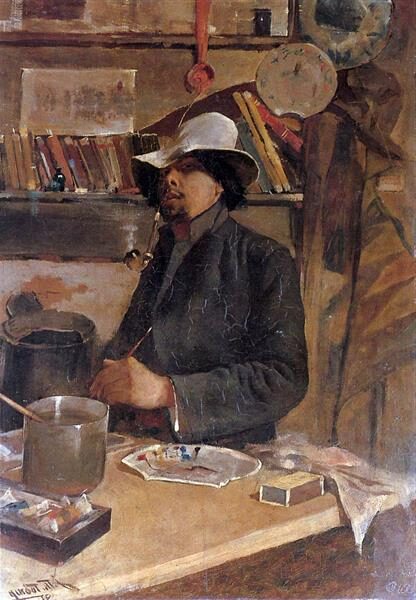
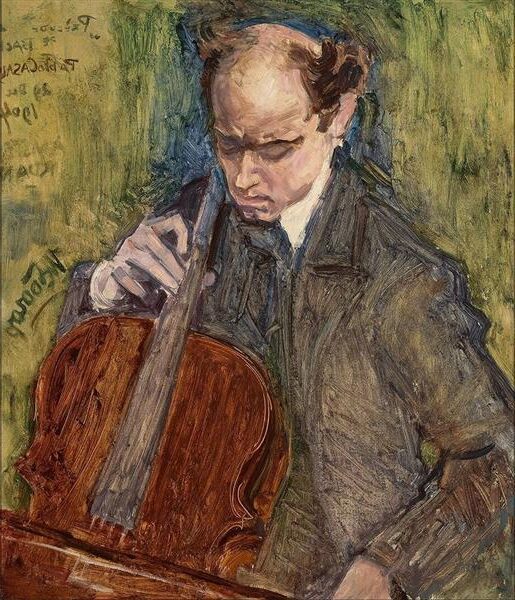
“The Sphinx” (1910) shows his Art Nouveau style with a woman’s face made of flowing lines. Toorop used symbols to express ideas and emotions in his art.
He painted dreamlike scenes with hidden meanings. His work helped spread Symbolism in the Netherlands.
Pointillism and Neo-Impressionism
Toorop also worked in Pointillism, using tiny dots of color to create images. He was part of Les XX, a group of Belgian artists who promoted new painting styles.
His pointillist works show scenes of Dutch life and landscapes. Toorop mixed this technique with his own unique style. He used dots to create flowing lines and shapes, not just to break up color.
Influences and Inspirations
Toorop’s art was shaped by many sources. His early work was influenced by Amsterdam Impressionism. Later, he drew inspiration from his Indonesian roots.

Portrait of Edmond Picard (1885) by Jan Toorop
Javanese motifs appear in many of his paintings. The sea was another big influence, showing up often in his work. Toorop’s style impacted other artists like Piet Mondrian.
His art blended realism with mystical elements. This mix of styles made Toorop’s work stand out and influence future artists.
Works and Legacy
Jan Toorop created many famous paintings and influenced modern art. His work can be found in top museums. Toorop’s unique style shaped Dutch art in the early 1900s.
Notable Paintings and Artworks
Toorop painted in different styles over his career. His early works showed Impressionist influences. Later he became known for Symbolist and Art Nouveau pieces.
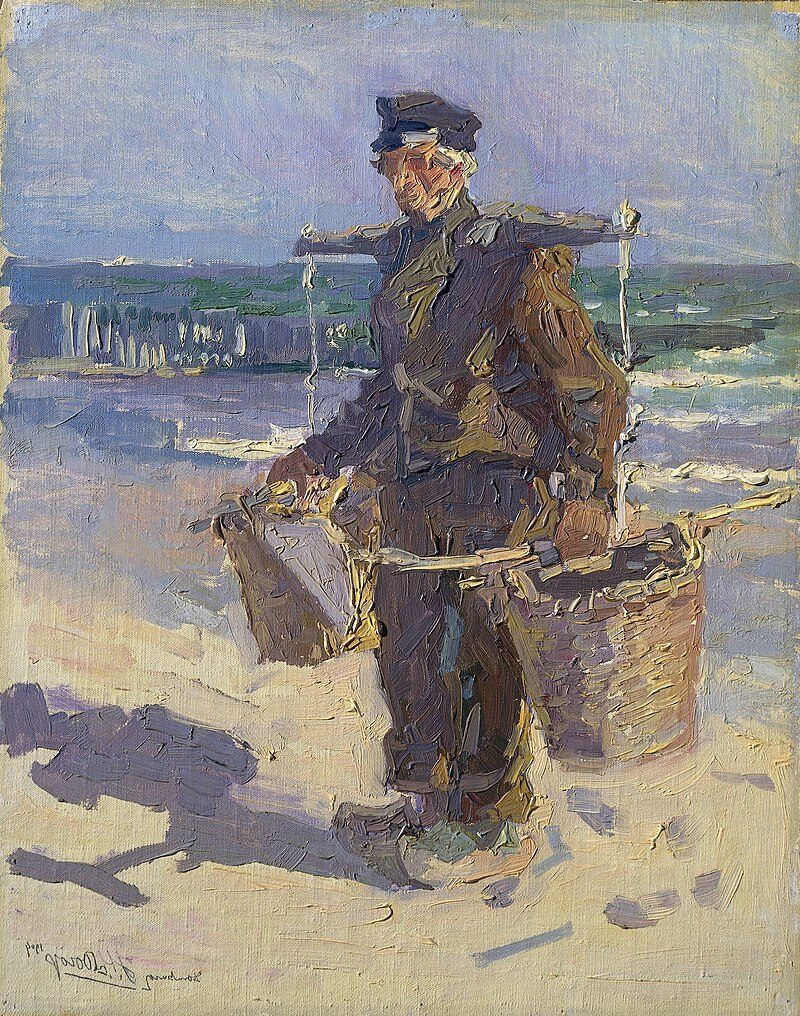

“The Shell Fisher” is one of Toorop’s most famous paintings. It shows a fisherman on the beach in Katwijk aan Zee. The painting uses curved lines in an Art Nouveau style.
Toorop also did many portraits. He painted his daughter Annie in “Portrait of Annie Toorop-Hall.” His self-portraits show how his style changed over time.
Later in life, Toorop made stained glass designs. He created windows for churches after converting to Catholicism. Toorop also drew book illustrations.
Public Collections and Exhibitions
Major museums display Toorop’s art. The Kröller-Müller Museum has a large collection of his works. Visitors can see his paintings at the Rijksmuseum in Amsterdam too.
Toorop’s art is often shown in special exhibits. Museums in Rotterdam and other Dutch cities have hosted shows of his work. These exhibits help more people see Toorop’s paintings.
Some of Toorop’s most popular works are scenes of the sea and dunes. He painted many coastal views in Domburg, Zeeland. Walcheren was another spot where he liked to paint landscapes.
Impact on Modern Art
Toorop helped bring new art styles to the Netherlands. His work linked Dutch art to wider European movements. Other artists looked to Toorop for inspiration.

The Connoisseur of Prints (Dr. Aegidius Timmermann) (1900)
Some compare Toorop’s linear style to Gustav Klimt. Both artists used decorative lines in their paintings. Toorop’s work may have influenced Klimt and other Art Nouveau artists.
Toorop’s mix of styles affected later Dutch painters. His use of bright colors and bold lines inspired other artists. Even Vincent van Gogh admired Toorop’s work.
Frequently Asked Questions
Jan Toorop was a versatile Dutch-Indonesian artist who worked in many styles. His art showed varied influences and evolved over time.
What are the significant artistic influences that shaped Jan Toorop’s painting style?
Toorop’s style was shaped by many influences. He studied at art schools in Amsterdam and Brussels. This exposed him to different artistic movements.
Toorop’s early work was influenced by Amsterdam Impressionism. Later, he explored Symbolism, Art Nouveau, and Pointillism.
How did Jan Toorop contribute to the Symbolist movement?
Toorop was a key figure in Dutch Symbolism. He created dream-like images with hidden meanings.
His Symbolist works often featured curvy lines and mystical themes. These paintings helped spread Symbolist ideas in the Netherlands.
What is the historical context behind Jan Toorop’s ‘High Tide’ painting?
‘High Tide’ was painted in 1891. This was a time when Symbolism was gaining popularity in Europe.
The painting reflects the artistic trends of the late 19th century. It shows Toorop’s interest in nature and symbolic imagery.
Could you describe the themes present in Jan Toorop’s work ‘The Vagabonds’?
‘The Vagabonds’ explores themes of wandering and outsider status. It shows Toorop’s interest in social issues.
The painting may reflect Toorop’s own experiences as a person of mixed heritage. It depicts figures who don’t belong to mainstream society.
What techniques did Jan Toorop employ in his piece ‘Fatality’?
In ‘Fatality’, Toorop used flowing lines and abstract forms. He created a sense of movement and emotion through these techniques.
The piece shows influences of Art Nouveau style. Toorop used symbolic elements to convey complex ideas about fate and destiny.
How did Jan Toorop’s artwork evolve throughout his career?
Toorop’s art changed a lot over time. He started with Impressionist-style paintings in his early career.
Later, he moved towards Symbolism and Art Nouveau. In his final years, Toorop’s work became more realistic and focused on religious themes.

